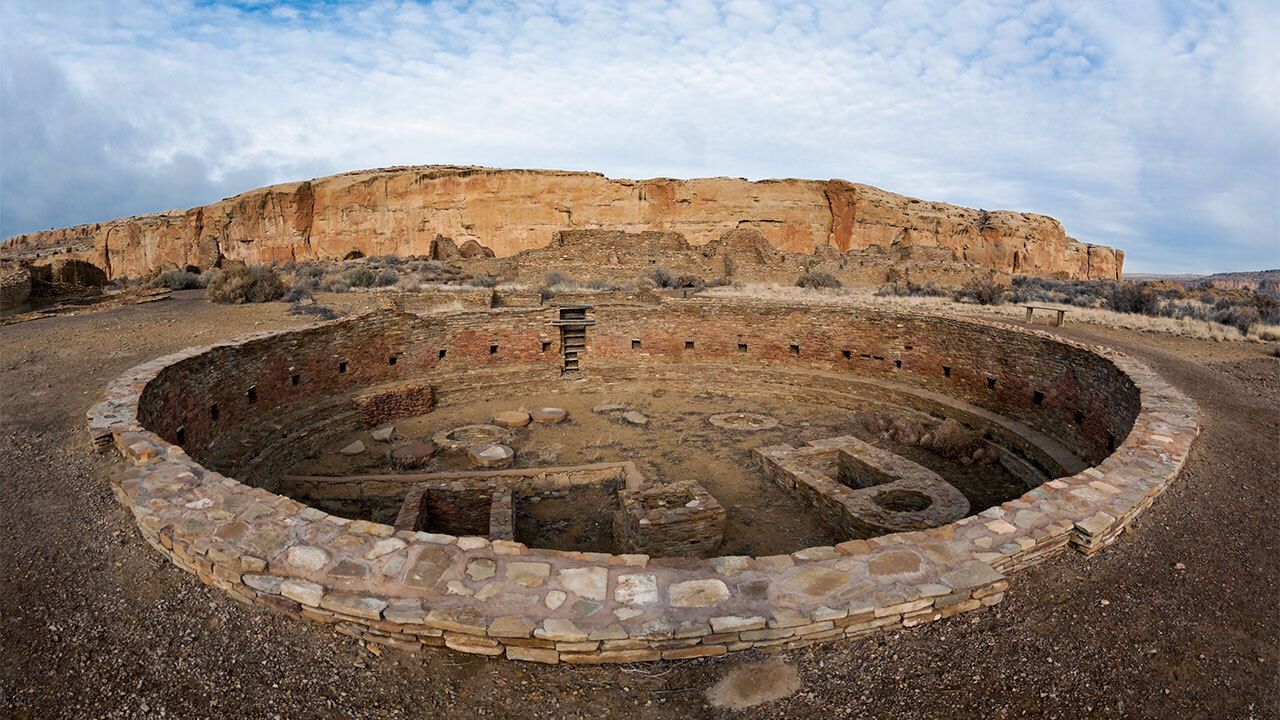Ancient Wonders Await At Chaco Culture Ruins

Have you ever wondered what life was like for ancient civilizations in North America? Chaco Culture National Historical Park in New Mexico offers a glimpse into the past with its impressive ruins and rich history. This UNESCO World Heritage Site showcases the architectural and cultural achievements of the Ancestral Puebloans, who lived there over a thousand years ago. Visitors can explore massive stone buildings, intricate petroglyphs, and ceremonial kivas. Whether you're a history buff or just love exploring new places, Chaco Culture Ruins provide a unique and educational experience. Pack your bags and step back in time at this incredible destination!
Discovering Chaco Culture National Historical Park
Chaco Culture National Historical Park, located in northwestern New Mexico, is a treasure trove of ancient ruins. This UNESCO World Heritage Site offers a glimpse into the lives of the Ancestral Puebloans who thrived here over a thousand years ago. Let's explore some of the most fascinating spots within this historical park.
Great Houses: Architectural Marvels
The Great Houses of Chaco Canyon are monumental structures that showcase the architectural prowess of the Ancestral Puebloans. These buildings served as community centers, ceremonial sites, and residences.
Pueblo Bonito: The largest and most famous of the Great Houses, Pueblo Bonito, stands as a testament to the engineering skills of its builders. With over 600 rooms and multiple stories, it was a hub of activity and culture.
Chetro Ketl: Just a short walk from Pueblo Bonito, Chetro Ketl is another impressive structure. It features a large central plaza and intricate masonry that highlights the craftsmanship of its creators.
Casa Rinconada: Unlike the other Great Houses, Casa Rinconada is a massive kiva, or ceremonial room. Its circular design and subterranean construction make it a unique and sacred space.
Petroglyphs: Stories in Stone
Chaco Canyon is home to numerous petroglyphs, ancient rock carvings that provide insight into the beliefs and daily lives of the Ancestral Puebloans.
Petroglyph Trail: This trail offers visitors a chance to see a variety of petroglyphs up close. The carvings depict animals, celestial symbols, and human figures, each telling a story from the past.
Fajada Butte: At the base of Fajada Butte, you'll find the Sun Dagger petroglyph. This unique carving aligns with the sun during solstices and equinoxes, demonstrating the advanced astronomical knowledge of the Chacoans.
Roads and Trade Routes: Connecting a Civilization
The Chacoans built an extensive network of roads that connected their settlements and facilitated trade across the region. These roads highlight the complexity and reach of their society.
Great North Road: Stretching from Chaco Canyon to the northern regions, the Great North Road was a major artery for trade and communication. Walking along this ancient path gives a sense of the vastness of the Chacoan world.
South Road: Leading southward, this road connected Chaco Canyon to other important sites. It underscores the interconnectedness of the Ancestral Puebloan civilization.
Astronomy and Alignment: Celestial Connections
The Chacoans had a deep understanding of astronomy, which they incorporated into their architecture and ceremonial practices.
Pueblo Alto Complex: This site includes several buildings aligned with celestial events. The precise positioning of these structures reveals the Chacoans' sophisticated knowledge of the stars.
Wijiji: A smaller site, Wijiji, also features alignments with solar and lunar cycles. Its remote location adds to its mystique and significance.
Outliers: Extending the Chacoan Influence
Beyond the central canyon, numerous outlier sites extend the influence of Chacoan culture across the region.
Kin Kletso: Located just outside the main canyon, Kin Kletso is a smaller Great House that offers insights into the daily lives of its inhabitants. Its unique layout and construction techniques set it apart from other sites.
Aztec Ruins: Although not within Chaco Canyon itself, the Aztec Ruins National Monument is closely linked to Chacoan culture. This site features a reconstructed Great Kiva and well-preserved structures that echo the grandeur of Chaco.
Preservation Efforts: Protecting the Past
Preserving the Chaco Culture National Historical Park is crucial for future generations to appreciate and learn from this ancient civilization.
Visitor Center: The park's visitor center provides educational exhibits and resources to help visitors understand the significance of Chaco Canyon. It also offers information on how to protect and respect the site.
Trail Maintenance: Ongoing efforts to maintain and restore the trails ensure that visitors can safely explore the park while minimizing their impact on the fragile ruins.
Chaco Culture National Historical Park is a window into a world long past, offering a unique opportunity to connect with the history and achievements of the Ancestral Puebloans.
Final Glimpse of Chaco Culture Ruins
Chaco Culture Ruins offer a unique peek into ancient history. The massive stone structures, intricate petroglyphs, and mysterious kivas transport visitors back to a time when this area was a bustling hub of activity. Walking through these ruins, you can almost hear the echoes of the past.
Whether you're an archaeology buff, a history lover, or just someone who enjoys exploring new places, Chaco Culture Ruins won't disappoint. The vast landscapes surrounding the ruins add to the sense of wonder and discovery. Don't forget to bring your camera; the sunsets here are breathtaking.
Plan your visit to Chaco Culture Ruins and immerse yourself in the rich history and stunning scenery. It's a trip you won't soon forget.

